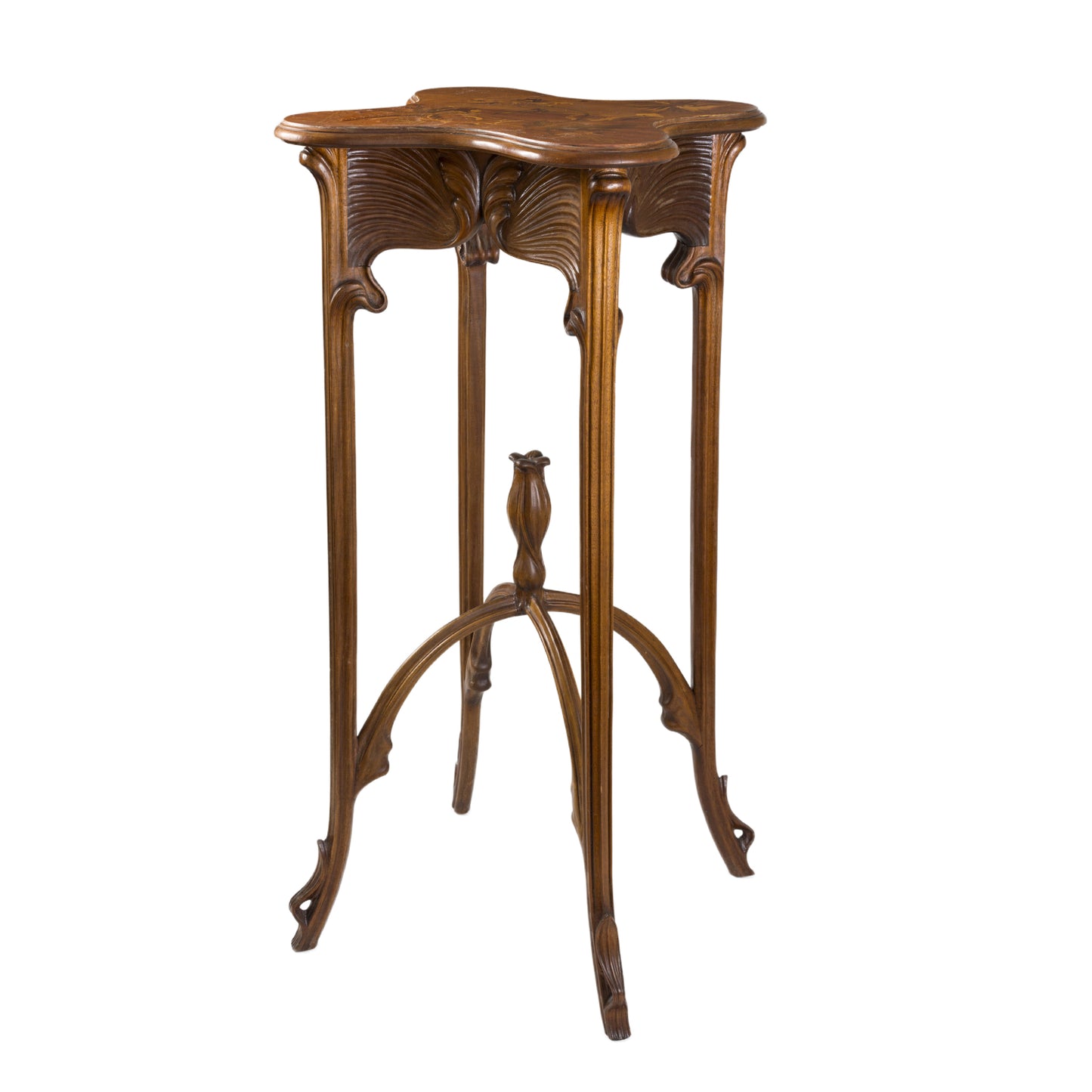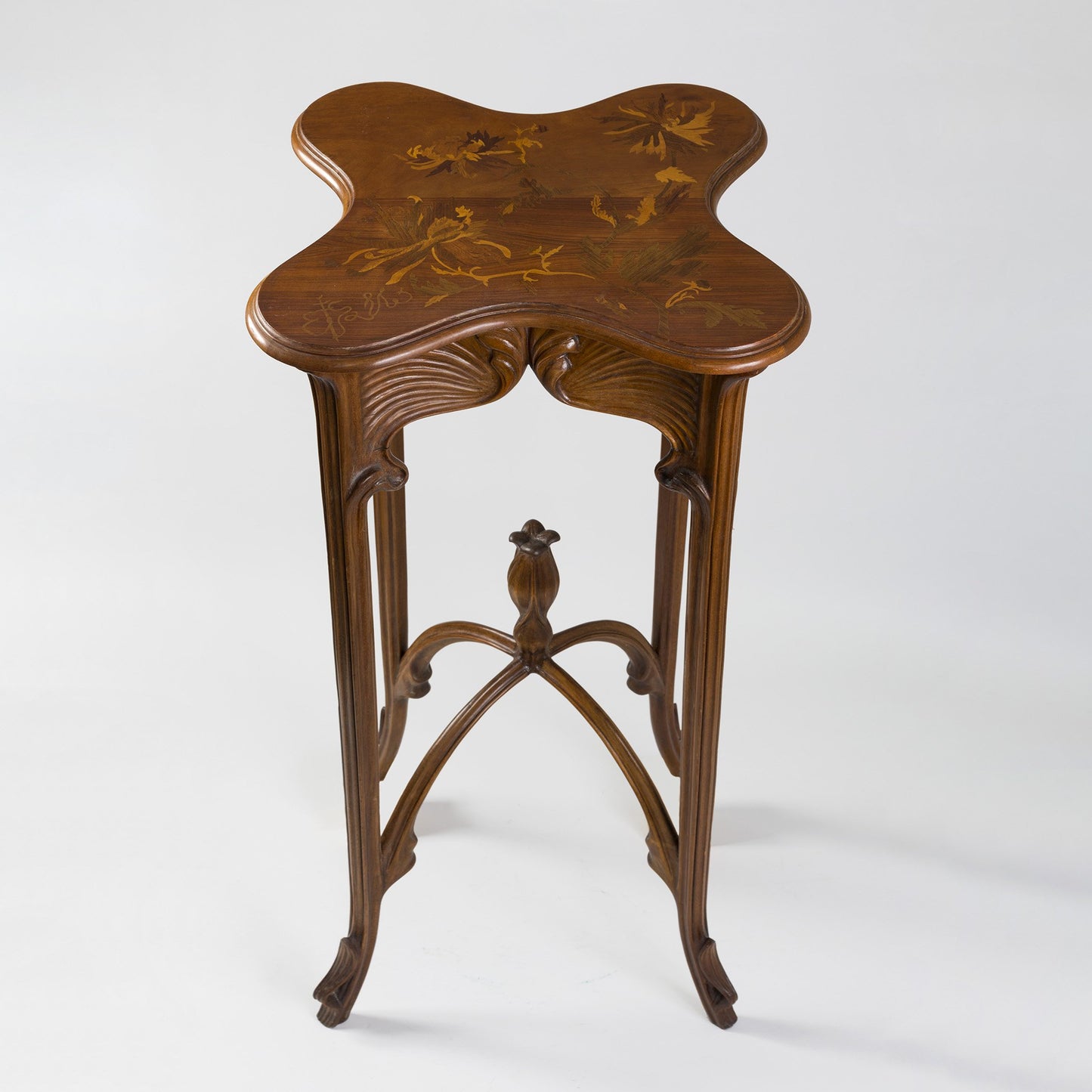Émile Gallé Wooden "Bananie" Pedestal
This noteworthy "Bananie," or "Banana," carved wood selette pedestal, by Émile Gallé, displays an uniquely beautiful construction, with a defining structure that is rivaled in its rarity only by the careful, detailed patterning and carving that brings the work to life. Gallé made very few wooden pedestals of this quality and design during his career, and even fewer of those with curved lower sections that reunite in the middle, culminating in the unfurling flower of the Sumatran Blood Banana. A masterwork of French Art Nouveau, this display pedestal has immaculate balance in its curves and straight lines, which work in harmony surrounding the top shelf, while the marquetry on the top section depicts columbines in full bloom.
Item #: YF-19612
Artist: Émile Gallé
Circa: 1903
Dimensions: 41" height, 14" width, 14" depth
Materials: French walnut, Fruitwood marquetry
Signed: "E Gallé" with Croix de Lorraine
Literature: Similar pedestal is pictured in Gallé Furniture, by Alastair Duncan and Georges de Bartha, Woodbridge, Suffolk: Antique Collectors' Club, 2012, p. 245, plates 4 & 4a
Item #: YF-19612
Artist: Émile Gallé
Circa: 1903
Dimensions: 41" height, 14" width, 14" depth
Materials: French walnut, Fruitwood marquetry
Signed: "E Gallé" with Croix de Lorraine
Literature: Similar pedestal is pictured in Gallé Furniture, by Alastair Duncan and Georges de Bartha, Woodbridge, Suffolk: Antique Collectors' Club, 2012, p. 245, plates 4 & 4a
Émile Gallé wrote in his seminal text, Ecrits pour l'art, of his inspiration for his banana pedestal, the 18th century novel "Paul et Virginie." In the story, the pair of Mauritian lovers Paul and Virginie find a pure and socially equitable way of life, unconstrained by France's strict social hierarchy. They make shelter and eat out of banana leaves, representing their harmony with nature and communal lifestyle. As an impassioned naturalist and socialist activist, Gallé touted the novel as a model for societal change.
Émile Gallé wrote in his seminal text, Ecrits pour l'art, of his inspiration for his banana pedestal, the 18th century novel "Paul et Virginie." In the story, the pair of Mauritian lovers Paul and Virginie find a pure and socially equitable way of life, unconstrained by France's strict social hierarchy. They make shelter and eat out of banana leaves, representing their harmony with nature and communal lifestyle. As an impassioned naturalist and socialist activist, Gallé touted the novel as a model for societal change.


















